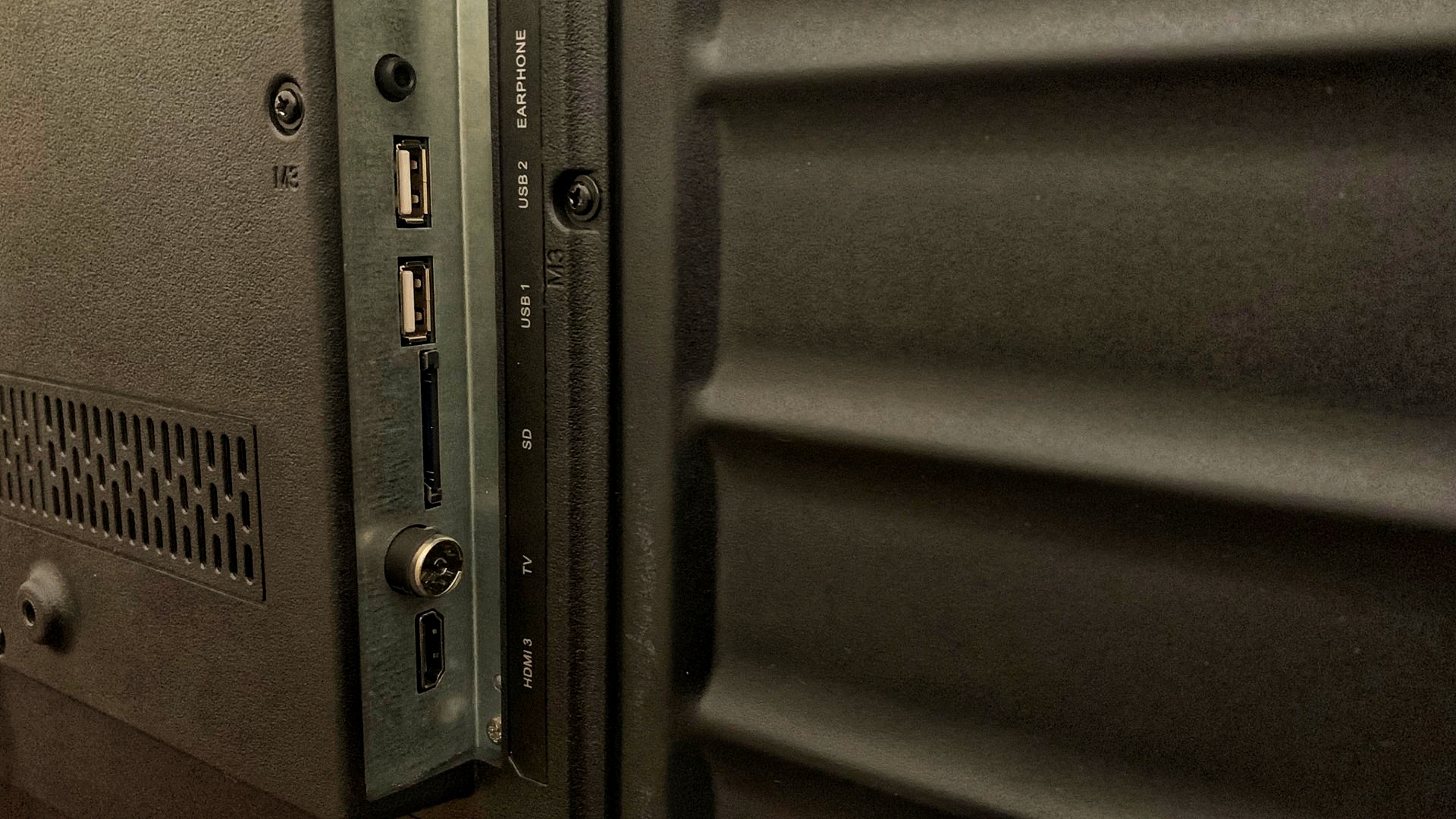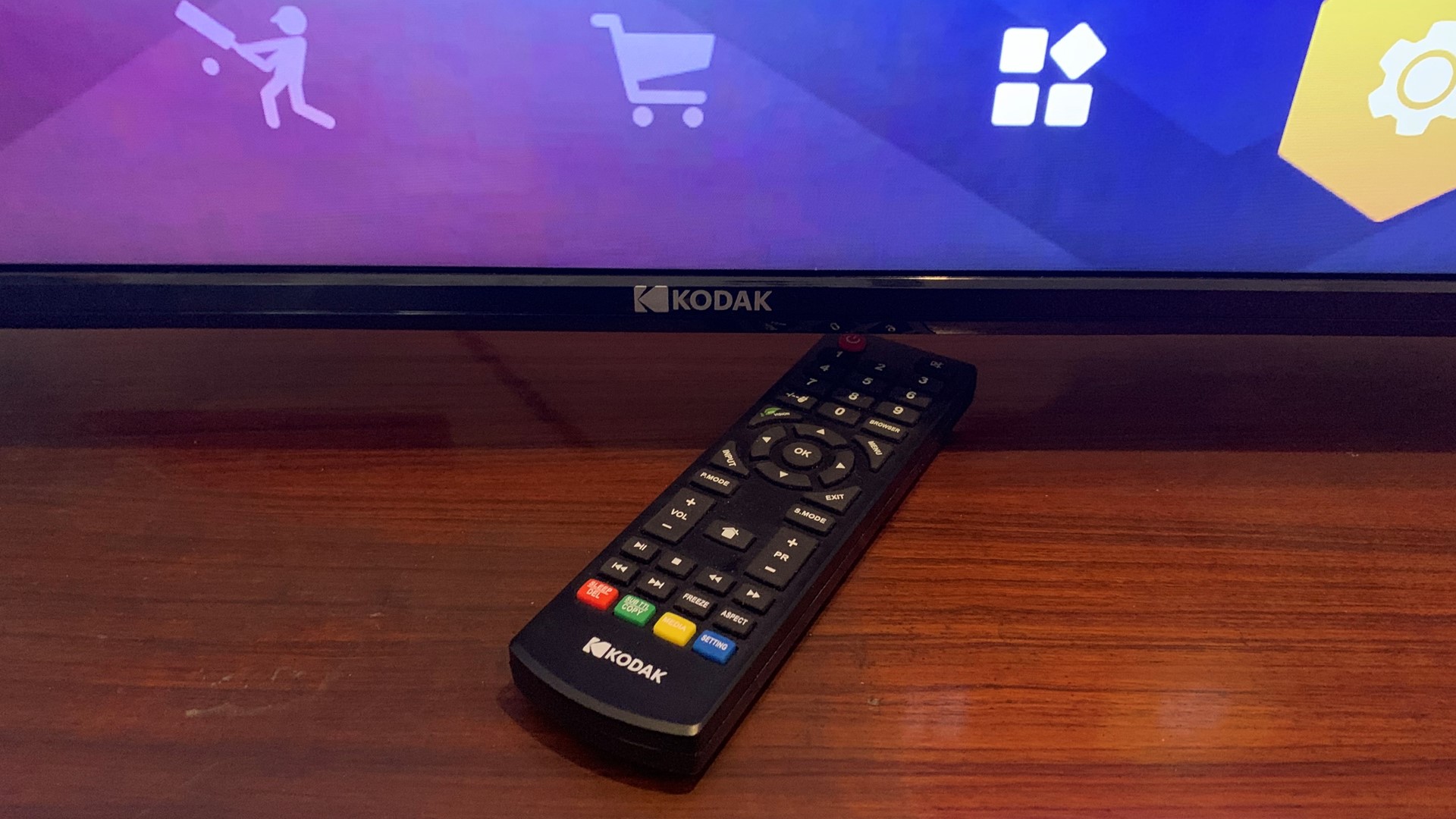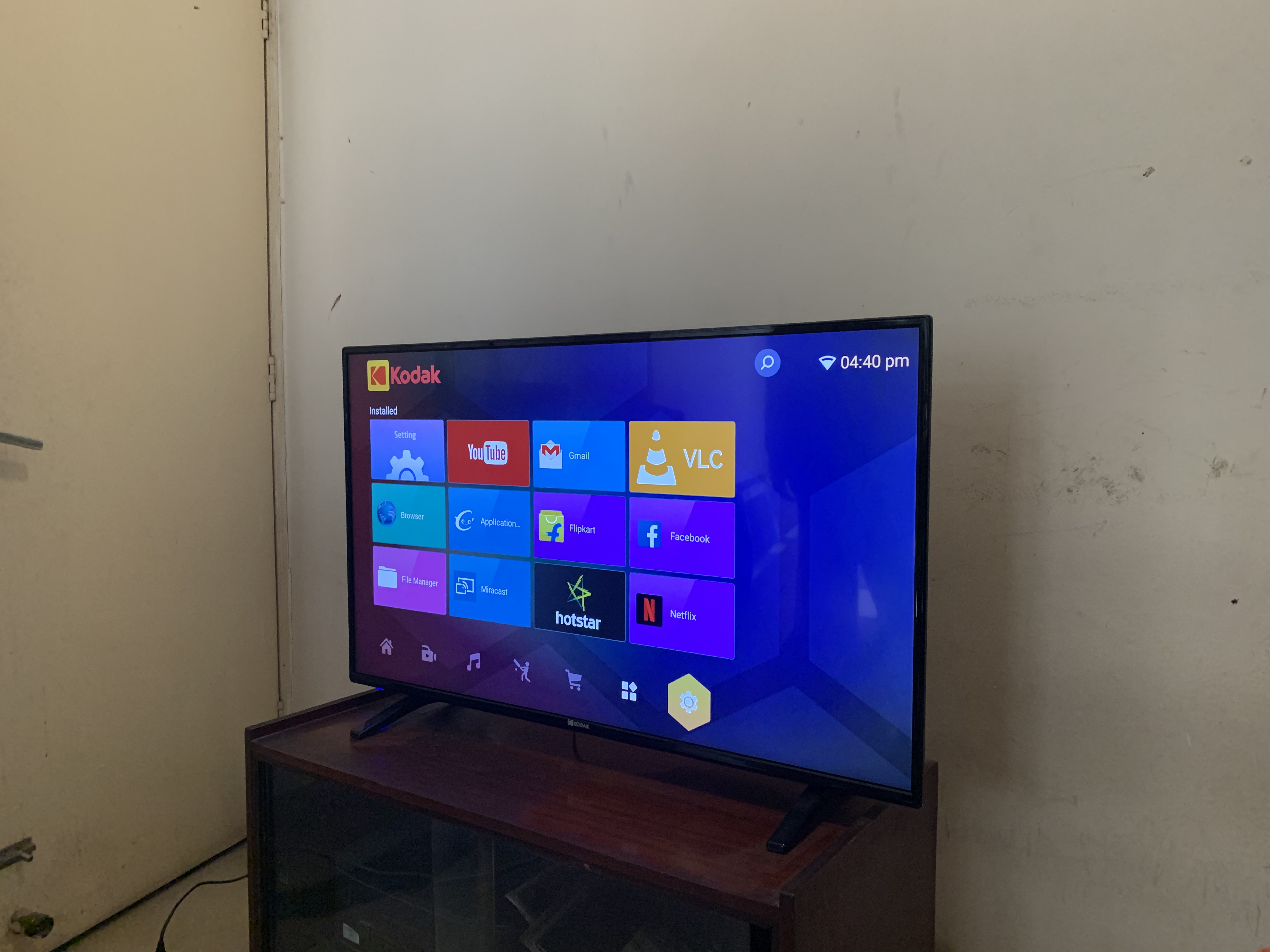TechRadar Verdict
The Kodak 43-inch UHDX has its flaws, but it fairs well on two most important departments - picture quality and app support.
Pros
- +
4K panel at par with the competition
- +
Lightweight
- +
Affordable
Cons
- -
Setting up is annoying
- -
No HDR support
- -
Laggy interface
Why you can trust TechRadar
Super Plastronics Pvt. Ltd. (SPPL), the manufacturer behind Kodak televisions in India launched its revamped 43-inch UHD 4K Smart TV in India in mid-January. The television, similar to other Kodak TVs binds a value for money proposition for users who are looking for a high-res smart TV at an affordable price.
While there are too many names competing in the same category, Kodak has been one of the most consistent players from last two years. Technically, it is not offering the best televisions right now, but its growth graph has been upwards since its first launch. The new TV comes with some improvements and upgraded internals.
It's soon going to be a month since we're using the TV, and we're quite sure that this isn't a bad deal for Rs 23,999.

Design
If you've been following the low-cost smart TV trend, you might be aware of the fact that expecting a high-end build quality from a budget smart TV is too much to ask for. Still, there are a few manufacturers that focus on build quality and design. Kodak is in between them.
While the build quality has improved over the years, we haven't seen much happening in the design department. The good thing about the 43-inch 4K smart TV from Kodak is that it's thin, lightweight and the material isn't bad for the price. But if you're setting it up on stands, you are in for some high-level patience test.
Usually, you get a set of screws in the box, but in this case, it was already fitted in the screw-thread at the bottom of the TV. The real task was to unscrew them and then put them back with the stands. This is where the TV tries your patience.

It has black bezels and body, which is a universal fit for any room. It has relatively thinner bezels that give more real estate to the panel and it looks more immersive when turned on. Another funny thing about the TV is that its buttons are so tough to find, that it took us a couple of minutes to find them. They are on the inner back of the TV and are of the same color as the body. On top of all, the functions of the buttons are engraved in black too. We agree that using buttons on the TV is a rare case, but the given solution on this TV is unusable in most cases.
Sign up for breaking news, reviews, opinion, top tech deals, and more.
Thankfully, there's an LED light on the bottom left of the panel that glows in red/blue showing standby/power status.

The rear of the TV has good quality matte finished plastic. All the connectivity ports are on the side and bottom of the box. Unlike the navigation keys, the ports are easily accessible and were clearly identifiable.
It has an audio out (AUX), 2 x USB, SD card slot, a coaxial TV antenna terminal, HDMI port, Ethernet connectivity port, S/PDIF port and 2 x AV ports. Basically, everything that one asks for.

The issues we just mentioned are small design elements that actually matter to a user, even it is for a short period. Otherwise, the build quality and design are good at this price.
Again, the remote control is chunky and the build quality is also underwhelming. It has dedicated keys for YouTube, Netflix and Hotstar. There's an option to use the remote as an air mouse, but it's slightly unresponsive, so we preferred the arrow navigation instead.

Performance and software
The 43-inch UHD Smart TV runs on a dual-core 1.4GHz processor with Mali-T720 GPU, 1GB RAM and 8GB internal storage. It offers dual operating systems like the Mi TV4A Pro - Aptoide and Android TV 5.0 OS. Combined with either of OS' the performance fails to impress. The TV doesn't lag often but there's a noticeable latency in operations and transitions.
The good thing is that the TV gives access to a wide range of apps and covers all the popular ones like Netflix, Hotstar or Prime Video. But we chose to attach the Amazon Fire Stick TV dongle, which actually gave us a flawless experience using this TV.
We tried playing 4K footage and this is where the TV impressed us. Although it lacks HDR and LED backlit, the picture quality is still good. The display is one of the better ones we have seen in this price range. But again, the lack of LED-backlit does hamper the visuals in darker scenarios.
Other than that, the colours look lively and 4K allows maximum details. Everything you need for a good movie watching experience. The panel is easy to view from all the possible viewing angles. Just avoid placing it against a light source to avoid glares on the screen.
The TV comes with standard 20-watt stereo speakers, which are neither too good nor depressing. They are loud enough to fill even bigger rooms. Note that the sound is flat but clear, and the bass is very limited.
Unluckily, I did not get a chance to test it for gaming, but it's most likely not the best choice if we are talking of professional gaming here.

Verdict
If you're looking to buy a 4K TV under Rs 25K, you can consider this for sure. The Kodak 43-inch UHDX has its flaws, but it fairs well on two most important departments - picture quality and app support. You get a wide variety of content on this TV and a respectable 43-inch 4K panel to play it. For this, there are a number of compromises that you have to make. It can be a well affordable bedroom smart TV, but if you're planning for the main TV for your home. There are better options at a slightly higher price.

Sudhanshu Singh have been working in tech journalism as a reporter, writer, editor, and reviewer for over 5 years. He has reviewed hundreds of products ranging across categories and have also written opinions, guides, feature articles, news, and analysis. Ditching the norm of armchair journalism in tech media, Sudhanshu dug deep into how emerging products and services affect actual users, and what marks they leave on our cultural landscape.
His areas of expertise along with writing and editing include content strategy, daily operations, product and team management.
